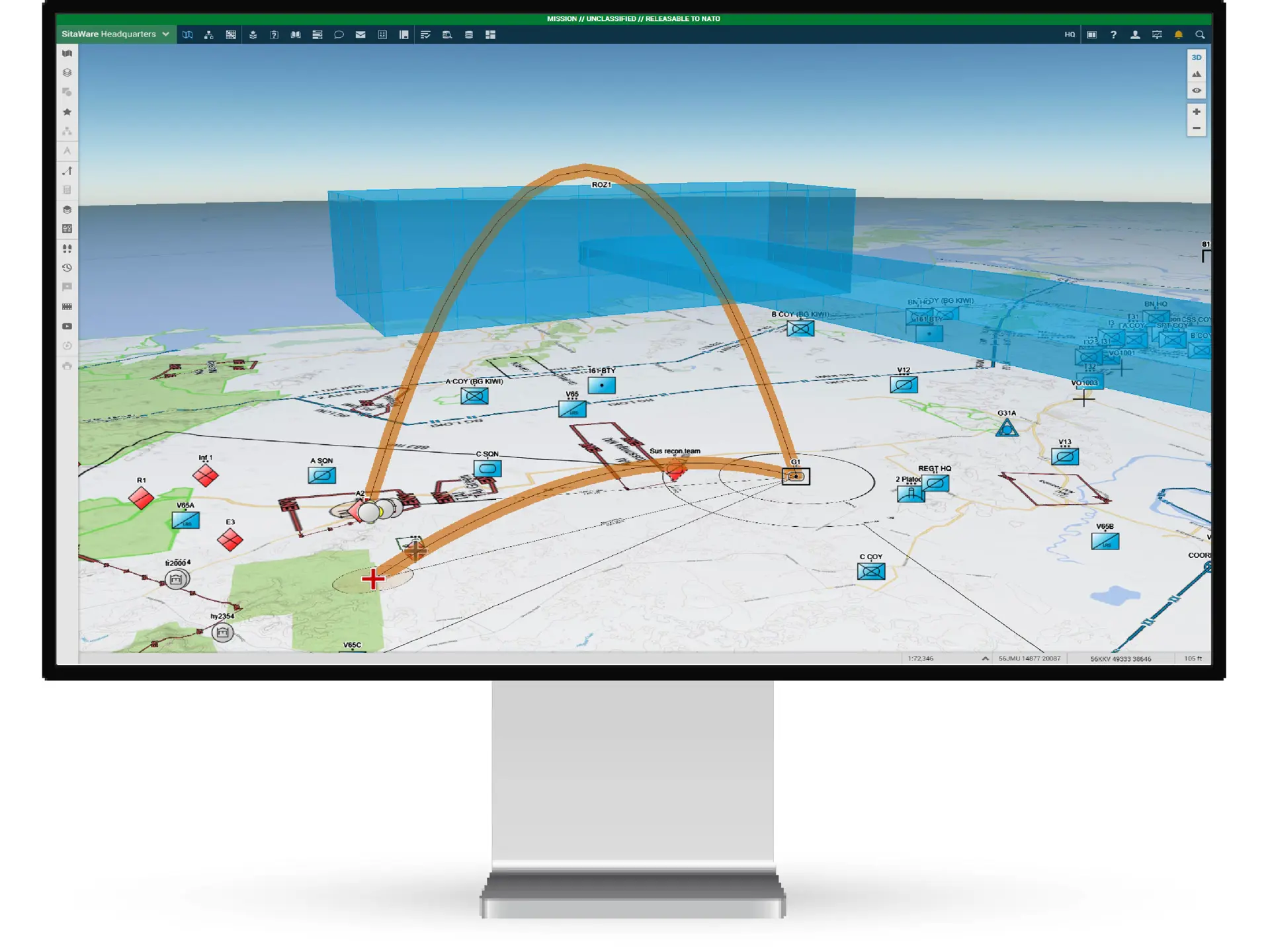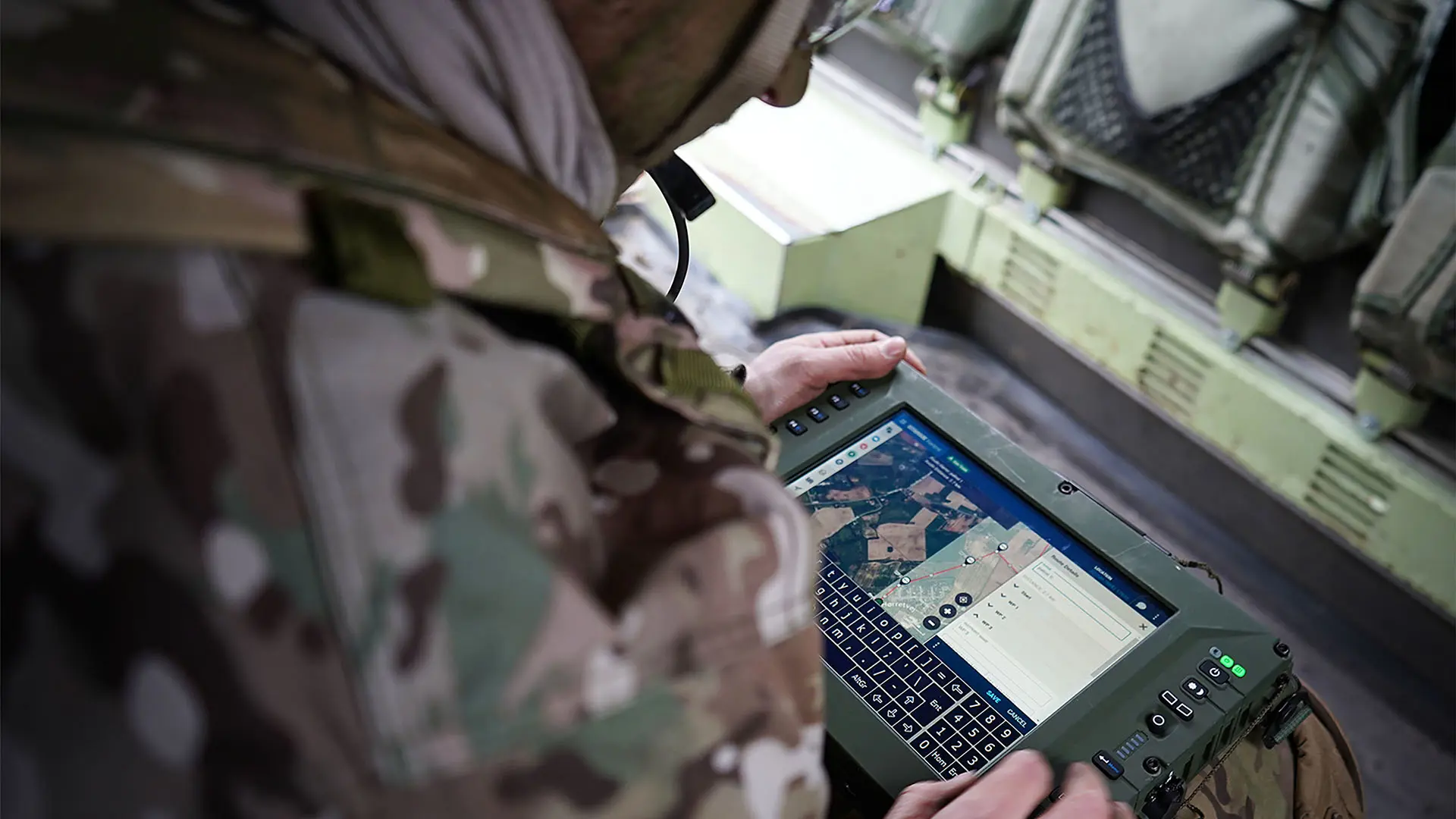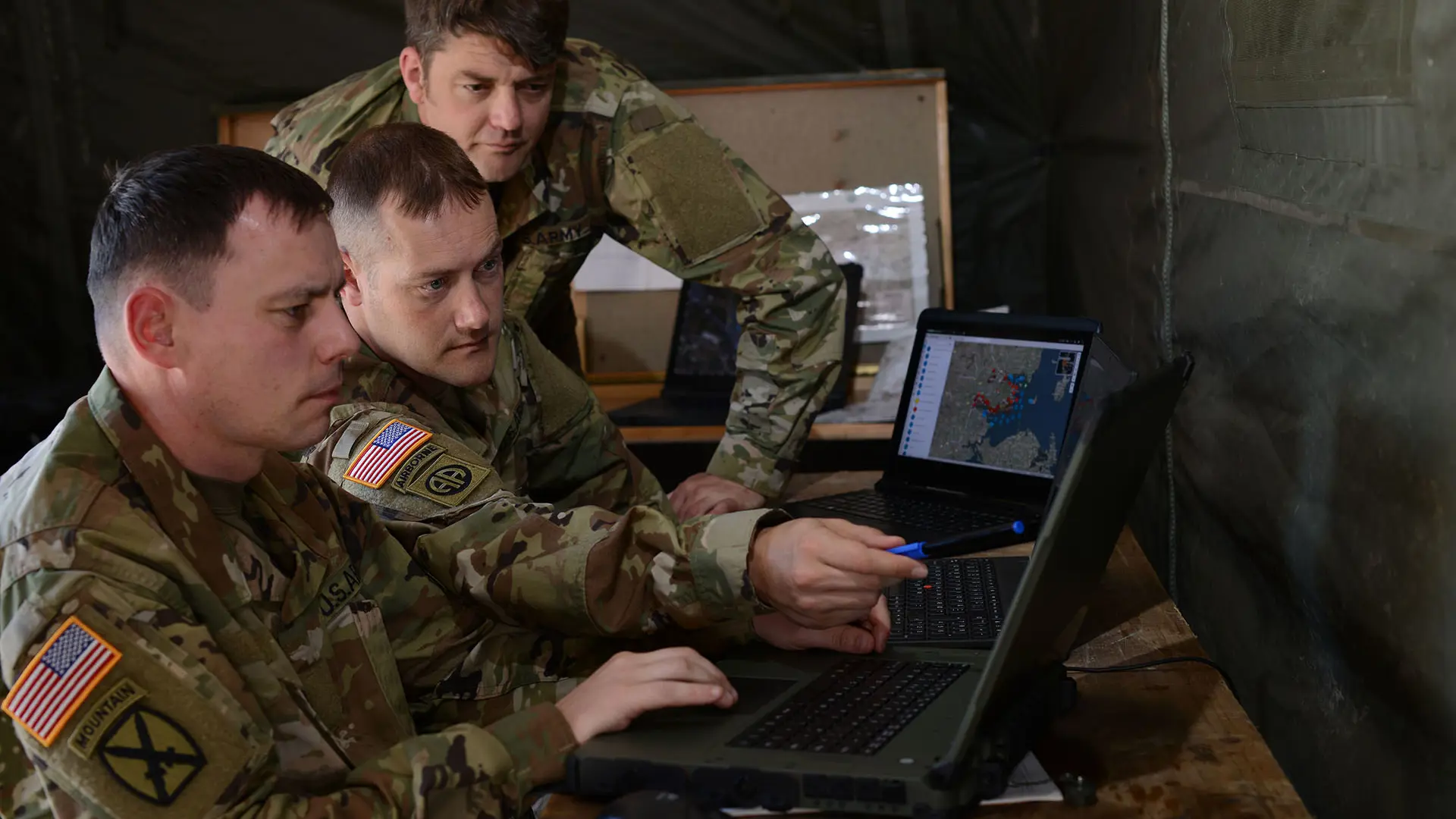Enhancing multidomain planning with new air capabilities
Latest update to the SitaWare suite brings in new airspace control order tools
Providing awareness of the airspace above military operations is a key factor in ensuring that support and effects can be delivered. The latest update to the SitaWare suite helps to ensure that SitaWare Headquarters users can work on airspace control planning by enabling the export of multiple airspace control means (ACMs) into a single Airspace Control Order (ACO).
“Utilising your air assets is a major force multiplier in the modern battlespace. Understanding how you can leverage your own support and deconflict their presence on the battlefield means that there is improved recognition of air operations over an active operational environment. Delivering full visibility for all users on the battlefield helps to improve planning and co-ordination, as well as situational awareness. Reducing the number of screens and ‘swivel chairs’ between systems creates a more unified command and mission control environment,” says Morten Juhl Bødker, Defence Product Director for Systematic.

This new feature allows for superior integration of the air domain with land and maritime operations handled by the SitaWare suite, supporting the execution of air operations and improving collaboration with a variety of airspace users.
“Bringing all this information together means that multiple users of the air – from fast jets to low-flying UAVs and the trajectory of artillery rounds – are able to operate with improved safety for users above and on the ground,” Bødker said, adding that “As current conflicts show, the role of small unmanned systems in particular is increasing, so having an understanding of where some of these small tactical systems may be operating, and deconflicting this with larger assets, means that the risk of interference by friendly forces is greatly mitigated.”
Data exchange for deconfliction
Building awareness around fire support missions is especially important for air operations, as it helps to identify planned trajectories and how these may interfere with air operations. Showing the planned trajectories, and how they may impinge on the floors and ceilings of cleared airspace is a critical part of approving fires missions when being planned and executed from a Joint Fires Cell.
ACO data is sent between operators using the widely used APP-11(D)(1) and Baseline 11 formats, ensuring simplified data delivery and platform ingestion and processing. These ACOs give indications of open and closed airspace, upper and lower limits for operations, air control restrictions, and deconfliction spaces for air assets. The development of ACM requests (ACMREQs) in APP-11 compliant formats also ensures that messages can be easily created and distributed to other systems.
Requests and changes for airspace corridors can be made dynamically as operations demand, with the suite’s synchronisation feature assisting in dissemination the data to other users around the battlefield. SitaWare Headquarters’ new Request Management tool also allows for a variety of other users from around the battlespace to have a shared overview of ACMREQ, as well as the ability to make other requests from air assets, such as air support.
To find out more about SitaWare Headquarters, click here.
For more information, contact Charles Forrester, Communications Manager (Defence) at charles.forrester@systematic.com








